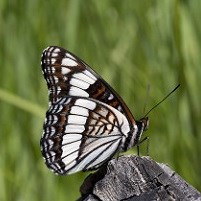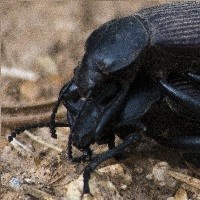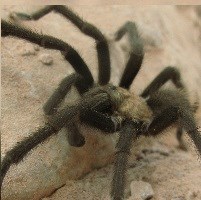
NPS Robb Hannawacker
More Information
Like most places on Earth, Grand Canyon National Park has far more species of invertebrates than any other animal group. While these animals do not have skeletons, many (including insects and arachnids) have hard exoskeletons, and they are very abundant —1443 species of invertebrates have been identified inside the park, and there are certainly many more species waiting to be identified. From Arizona bark scorpions (Centruroides sculpturatus) and tarantulas to Arizona's state butterfly, the two-tailed swallowtail (Papilio multicaudata), you can always find something moving if you look closely. Study and observe these tiny animals, but do not disturb or harm them.

NPS Eric Hope One of the most venomous animals in the park, the bark scorpion is a small animal that only grows to 2.5 inches (6.4cm) long. 
NPS Robb Hannawacker The Grand Canyon is home to 292 documented species of butterflies and moths.(Order Lepidoptera) 
NPS Robb Hannawacker The Grand Canyon is home to 179 species of beetles, and some of the most commonly seen are the darkling beetles. Members of the family Tenebrionidae, these large, dark beetles are found throughout the Grand Canyon 
NPS The largest spiders in the world, tarantulas are predators that call the Grand Canyon home, feeding on insects, small lizards, and small rodents. 
NPS Robb Hannawacker Growing up to 2 inches (5cm) long, these colorful wasps hunt tarantulas to feed their larvae. More Information on Select Invertebrate SpeciesSouthwestern U.S. Invertebrate Science |
Last updated: August 20, 2021
